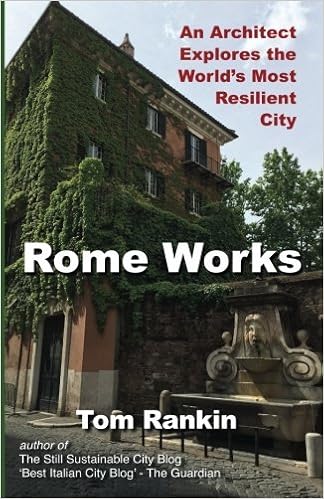A Secular Roman Spring
It has indeed been a strange spring so far in Rome. First, back in March we had the Ides (15) of March, the Palazzo Massimo alle Colonne “miracle day” (16), the Rome Marathon (20) and the Spring Equinox (20), some of my favorite rites of Spring, all overshadowed by the celebrations of the 150th anniversary of the Unification of Italy on March 17th. Italian flags, usually only seen during World Cup season, sprouted everywhere. The Comune di Roma (a title which roughly means “municipality” and which is held by all cities and towns above a certain size) had the previous year essentially dissolved and changed its name to Roma Capitale, an entity with a unique status as the nation’s capital. Now the city was decked out to earn that title, at least symbolically.
April saw no let up in the festivities. April 21, Rome’s 2763rd birthday. April 22, the planet’s 41st Earth Day. April 24 Easter , April 25 Pasquetta (Lunedi’ degli Angeli). Sorry, Easter Monday just doesn’t say much, but this is a big holiday in Italy, famous for picnics in the countryside. April 25th is also St. Mark’s feast day in Venice. And April 25th the national holiday marking the defeat of Fascism by the partisans, one of the more important secular holidays in Rome, but this year the secular meaning was overshadowed by the religious pomp.
Not even a week later hundreds of thousands of religious pilgrims started to arrive in Rome for the festivities marking the beatification of Pope John Paul II (JPII was the event’s catchy logo). Only six years after his death, he was on the fast track to sainthood and Rome was again decked out in kiosks and porta-potties ready for a big event. Where a month earlier there had been speeches praising Garibaldi and the defeat of the Papacy by the non-clerical Italian state in 1861, there were now images of the deceased Pope. Outside my studio the night of April 30, hundreds of thousands of pilgrims held a candlelight vigil. The following day, May 1, they flocked to St. Peter’s square to hear the current Pope officiate at the beatification ceremony.
But May 1 is already a holiday, one of the most important in Europe, celebrating workers and labor. Pasquetta had seen people out post-Easter picnicking instead of commemorating the defeat of Fascism; now a week later the Pope was stealing the thunder of the working class. After the morning’s events at St. Peter’s started to wind down, the annual union-sponsored free concert outside St. John’s in the Lateran started to get underway. Commentary about the “two piazzas” was not lacking. There were logistical glitches in both; many pilgrims couldn’t get anywhere St. Peter’s and the sound system at St. John’s, at least when I was there, was on the blink leaving the crowd confused but amused. At the latter, there was a strong presence of campaigning to promote the rights of socially precarious workers, the right to publicly managed water (a referendum will be held in June to fight planned privatization of this precious resource) and to reaffirm Italy’s long-held commitment to reject nuclear energy in favor of safer renewable alternatives. The other referendum in June is a vote to prevent the Italian head of state from avoiding to stand trial in the case of criminal allegations, and there has been a concerted effort on the part of the government to sabotage the referendum campaigns to lower the risk that any of these (but in particular this last one) should pass. I stayed clear of the pilgrimage events so I don’t know if the referendum was publicized there as well, but the Vatican has not to my knowledge taken a stand on any of the issues (although Vatican citizens can vote in the referendum).
During an interview with CNN several months ago I was asked about the Vatican and my only comment was that there seems to be a parasitic relationship between Rome and the “state within the city”, but that it wasn’t always clear which was the parasite and which the host. This weekend, Rome has “played host” on a big scale, plastering the city with images of JPII, kitsch souvenirs, setting up kiosks and toilets and turning a blind eye to pilgrims sleeping in the streets. This latter phenomenon is ironic since the city had just undergone a campaign to evict Rom residents and bulldoze their camps the week before to clean up the city for the event, causing the Rom to seek asylum in the extra-territorial church of St. Paul’s Outside the Walls. Meanwhile, the battle continues for ten families who have lived for generations farming the land in the Aquafredda Park but are now facing eviction, by land’s “owner”, the Vatican.
It’s hard to live in Rome in view of Michelangelo’s cupola, breathing the fumes and risking death under the wheels of “Christian Rome” tour buses and Vatican-plated Mercedes everyday, and not feel a bit cynical.



A group of priests and nuns have just come out with a hunger strike in support of the referendum for public water; i stand corrected.
LikeLike